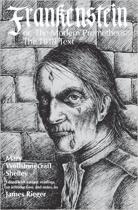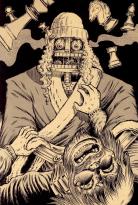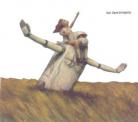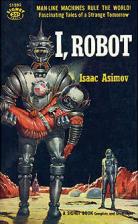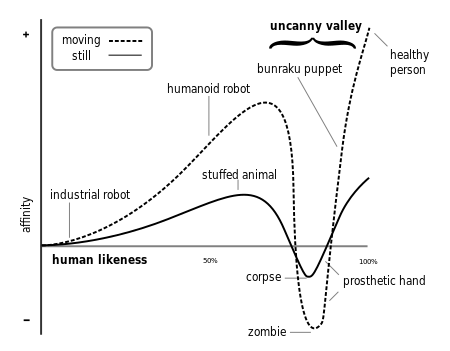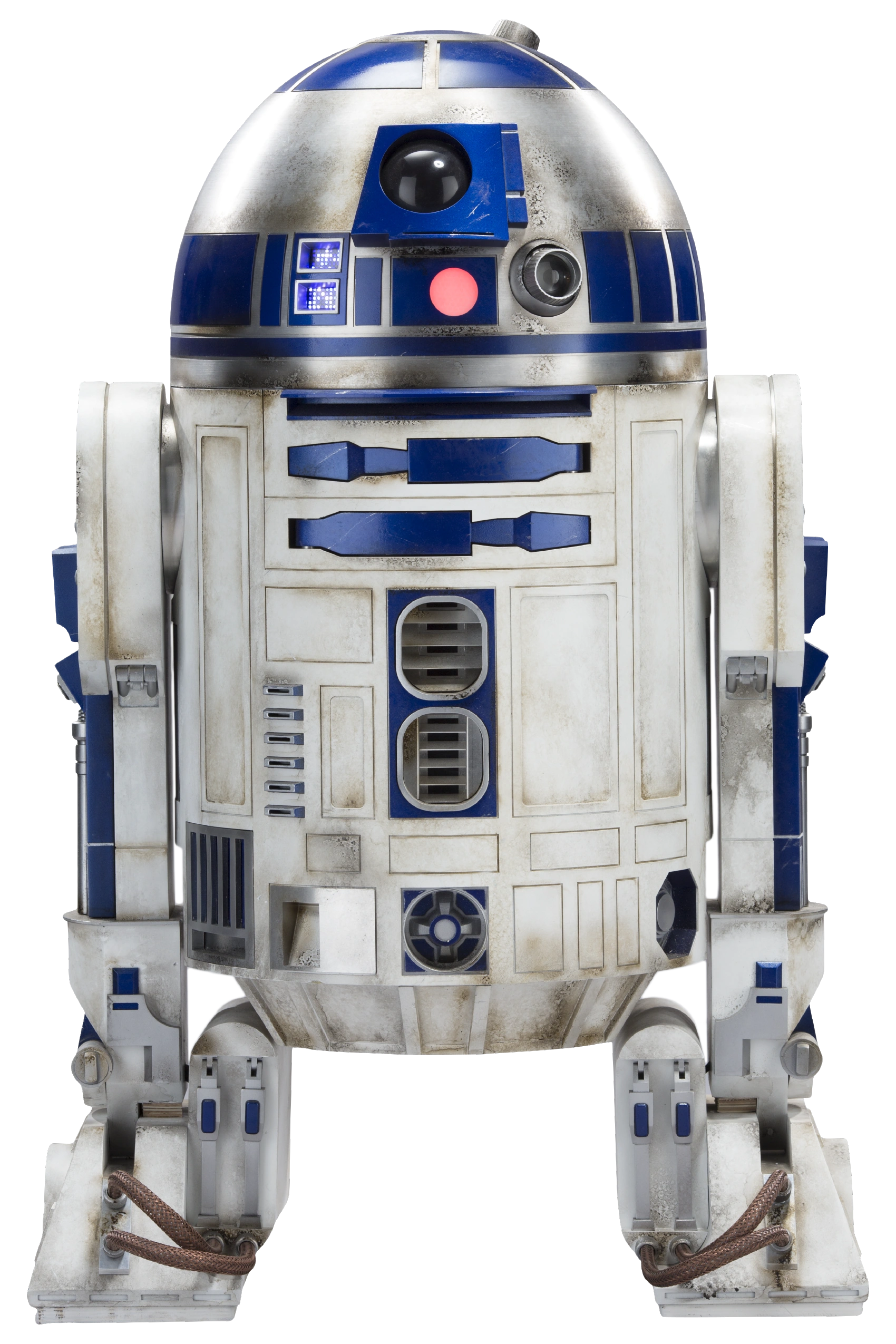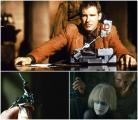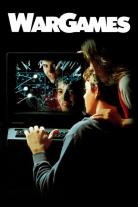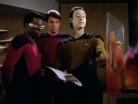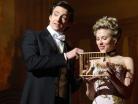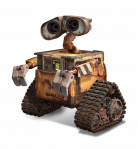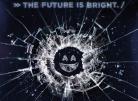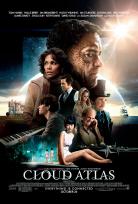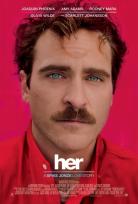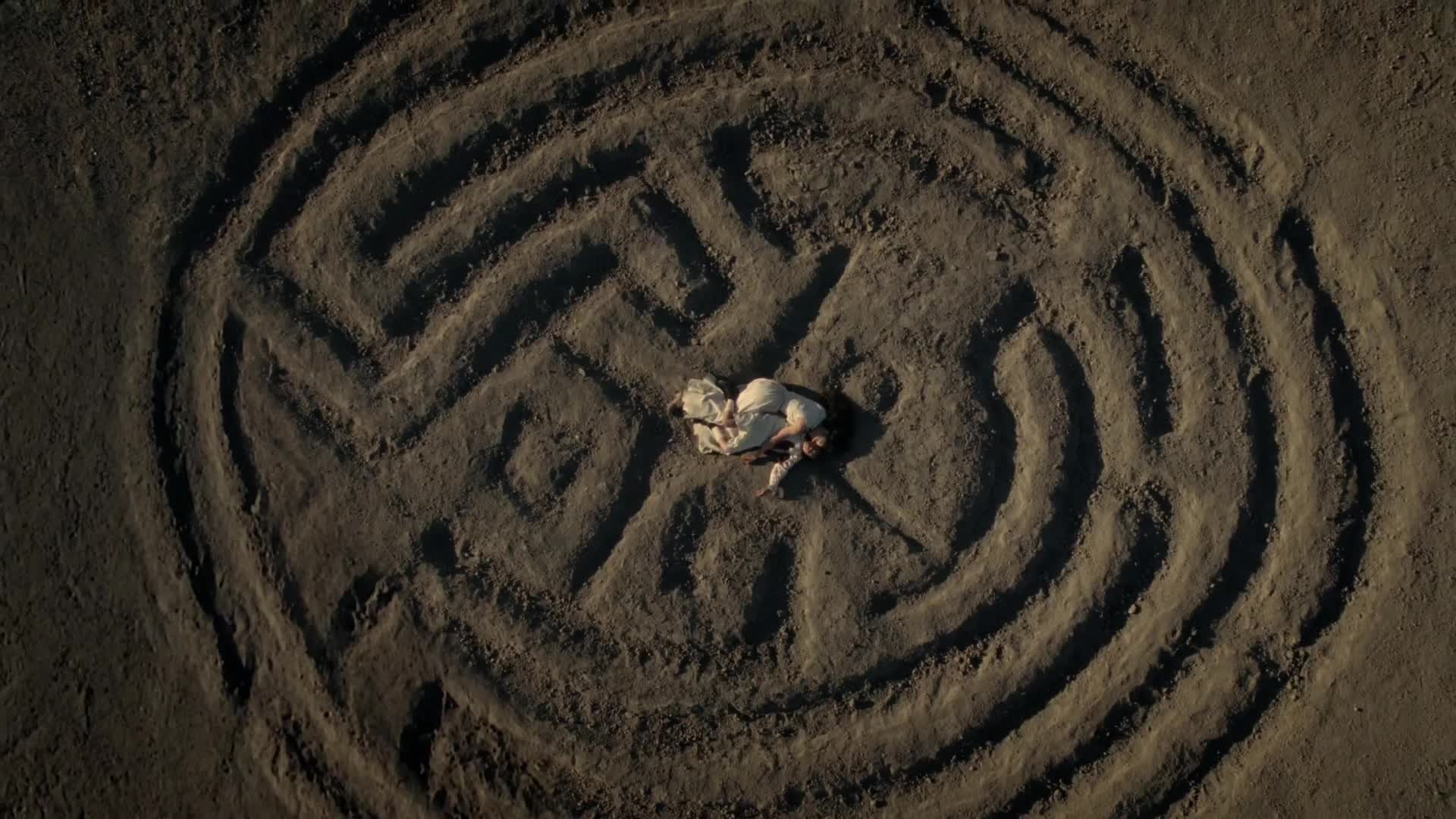Timeline of Robots and Clones in Fiction and Film
Created by Anonymous on Fri, 02/24/2017 - 11:10
This timeline features robots, clones, and posthumans from our syllabus.
Timeline
Chronological table
| Date | Event | Created by | Associated Places | |
|---|---|---|---|---|
| 1596 |
Edmund Spenser, The Faerie Queene (1596)The Faerie Queene is an epic poem written by Edmund Spenser and published in two parts, the first in 1590 and the remainder in 1596. The poem is divided into six sections, each of which highlights various knights on searches for the virtues of Holiness, Temperance, Chastity, Friendship, Justice, and Courtesy. The knights each encounter hardships and strife in their quests, but guided by mentors and these virtues, are able to overcome the obstacles. The character Talus is introduced in Book V. As the first representation of a modern robot, Talus is described as an iron man. He is likely based off the bronze automaton of Greek mythology that defends Crete from invaders. In The Faerie Queene, Talus is a defender of justice, and he works along with Sir Artegal for equality and rights. However, Talus's detachment from humanity makes him an unbiased figure whose lack of consciousness sometimes prevents him from showing any mercy upon his victims. For a majority of his story, Talus acts as a sort of henchman for Artegal, and this is one of the first (if not the first) modern descriptions of a machine built just to accomplish a task, in this case, punishing and/or killing law breakers. |
Mollie Maples | ||
| 1816 |
E. T. A. Hoffmann, “The Sandman” (1816)This story follows a man named Nathaniel. As a young boy, Nathaniel comes to know of Coppelius, who Nathaniel believes to have been the cause of his father's death. Years later, Nathaniel meets a man named Coppola and swears it is Coppelius. Clara, sister to Nathaniel's friend Lothaire, replies that it is most likely all in Nathaniel's mind. One day, Coppola comes to Nathaniel and begins raving about "pretty eyes." However, the items Coppola is talking about turn out to be mini telescopes, which Nathaniel actually buys. Nathaniel later comes to know of Spalanzani's daughter Olympia and decides to propose to her. He goes to her one day but finds Coppola and Spalanzani fighting over her, arguing about who made what of Olympia. Olympia is an automotan created by the two of them. Coppola, who really is Coppelius, takes off with the doll and hurts Spalanzani. Furious, Nathaniel attemtps to strangle Spalanzani to death but is stopped and taken away. After recovering, Nathaniel is to marry Clara. They walk up a high steeple where Nathaniel at one point pulls out the small telescope. But through the lenses, he sees Clara who is actually right beside him. Nathaniel becomes mad and yells at Clara to spin and repeats "pretty eyes." Lothaire runs up the steeple and saves Clara from any harm. Nathaniel spies Coppelius and leaps from steeple, falling to his death. "The Sandman" has many aspects that relate to the uncanny. Freud has talked about it in his work "The Uncanny," published in 1919. It is the familiar that has turned frightening. Freud also goes on to explain the importance of eyes and its relation to the castration complex as well as the general fear invoked with losing one's sight or eyes. Many aspects of "The Sandman" can also be seen in Masahiro Mori's "The Uncanny Valley," as seen by the reactions of the townspeople towards Olympia. Mori warns others of the danger of dipping into the uncanny valley the more we try to create robots to look more human-like. Olympia was seen as very beautiful, but there was something strange and unnerving about her looks as well, which is why most people did not approach her. It questions how close are humans willing to make robots look like people, to the point that they can no longer be differentiated from real, organic humans. "The Sandman" not only brings up the idea of the uncanny, but also the theme of reality versus fantasy, as Nathaniel is constantly under question as to whether the events he witnesses throughout the novel are truly happening or in his mind. Sources: Summary of Freud's "The Uncanny" |
Tiffany Ku | ||
| 1818 |
Mary Shelley, Frankenstein (1818)Frankenstein, Mary Shelley 1818Summary:Initially, the novel begins with a captain who wishes to be the first to go to the North Pole. However during such pursuit, he stumbles upon Victor Frankenstein, who, when asked how he got to such a place, begins to tell his tale as he speaks on his childhood and curiosity with science. He then goes on to explain how he went to an university with his best friend, Henry, where he pursues the same knowledge he learned from the books he read when he was young. It is here does he first gets the idea to build his creature. He explains he has done so successfully, yet terrified by his creation, and ran away back to Geneva to continue his life. From that point on, the creature, saddened due to his abandonment and constant beratement, pursued Victor and his family in order to learn why his master and creator has made him only to abandon him. The creature first attacks and kills William, Victor’s brother, which he plants on Justine leading to her death. This causes Victor to confront him. It is then that the creature tells his tale, and threatens Victor to make him a companion, or he will be with Victor on his wedding night. Victor complies only for a moment before he is madden about wasting his time, and destroys his project before he even finishes. With that, he goes to marry his fiance, Elizabeth, and as predicted, he is visited by the creature who kills his wife. The novel then comes full circle back to the beginning as The Captain now knows Victor and the creature are pursuing each other across the North pole. Victor then dies, and the captain watches as the creature cries over his body. Humanness:Frankenstein’s monster was inorganically created using human body parts, making him primitive form of Artificial Intelligence. Frankenstein “worked hard for nearly two years, for the sole purpose of infusing life into an inanimate body” (Shelley, 35). He created life where life seemingly could not be created, and was so horrified by his creation that he abandoned it and fled. The scientific assembly of his body makes the creature “artificial,” and the creature was created in such a way that gives him the capacity to imitate and gain intelligence. Like modern day representations of A.I., Frankenstein’s monster learns through observation and imitation. When the creature is hiding, he observes the occupants of the neighboring cottage through a crack in the wall. He notices they communicate through language, and mimics their mouths and the sounds, developing an understanding of their language and a means to communicate. Frankenstein’s monster is not human, but it closely resembles humans: it is beautifully built yet terribly ugly. Because of its horribly close resemblance to humans, its flaws reveal problems of our human society. Fear:Fear itself can distance the human from numerous negative associations that are actually exclusively connected to humanness. Frankenstein’s creature is a monster; “monster” in itself is a word that seems to lie on the opposite of human, the human’s enemy by design. Yet, the creature’s origins lie in the human desire to create; his teachings in morals strictly coming from the way humans around him treat him and themselves. Even the pieces that make up his physical composition are human body parts. Yet he is the ‘unknown’ or must remain that way to in order to stop the real fear of self-reflection amongst society and the questioning what humanness actually is. That is to say, it can be seen as quite a human trait to be affected by corruptive environments; to manipulate and lie much like the creature did for Justine when he framed her for William's death. To seek revenge for mistreatment and abandonment. This is true fear: to see monstrous traits as human. Sources:Frankenstein, Mary Shelley 1818 -Hannah and Kayla |
Hannah Resnick | ||
| 16 Apr 1899 |
Ambrose Bierce, “Moxon’s Monster” (1899)SummaryThe short story begins with a discussion between Moxon, a self-described "inventor and contructor of machines", and the narrator about the nature of consciousness and whether automatons can think. Moxon uses examples from nature, such as plant tropism and the precise organization of crystals, and Herbert Specer's definition of life to argue that all matter has consciousness because "consciousness is the creature of Rythmn". Exasperated with the conversation, the narrator leaves Moxon's rooms but goes back when he has an epiphany and realizes the truth in Moxon's reasoning. He returns to see Moxon playing chess with an automaton who, upon Moxon's victory, strangles his inventor. The narrator then wakes up in the hospital and learns of Moxon's death from Haley, Moxon's hired metalworker. Motion and ConsciousnessThere is a strong corellation drawn in the story between motion and consciousness, as consciousness arises from rythmn and action. In Moxon's examples, it is the motion of the plants and the motion of the atoms of a crystal that make them conscious. Similarly, the movements of the robot are what make the narrator uneasy and the robot is consumed by motion, in the form of convulsions, just before it kills Moxon. Moxon expouses a very external view of consciousness; he believes that if the actions or movements of an entity make it appear to be making decisions, it must be regarded as conscious. |
Mihira Konda | ||
| 1931 |
James Whale, Dir., Frankenstein (1931)James Whale's adaptation of Frankenstein was one of the first major film adaptations of the story, spurring a culture of sequals and new adaptations. In fact, the portrayal of the creature by Boris Karloff became one of the most infamous and replicated film characters in history. Today, the creature, as shown to the left, is familiar to most Americans, even if they have not seen Whale's film. Whale's interpretation highlights important questions that the original story provides. What does it mean to create life? What are the consequences of humans playing a role in creation? What is the relationship between God and mankind? What happens when we let a desire consume us? Whale's film addresses these questions through specific film techniques, including extreme close ups and name changes. In the clip below, Whale focuses on the ideas of both innocence and the process of learning, raising questions of whether the monster is at fault for the murders he commits.
|
Elizabeth Paul | ||
| 1932 |
Aldous Huxley, Brave New World (1932)SUMMARY: In the novel Brave New World, Aldous Huxley crafts a future society with a single "World State" governed by a totalitarian regime and a rigid social structure. Each group is taught to be satisfied with their role in society and to distract themselves with consumerism, casual sex, and a drug called soma. The novel follows the story of Bernard Marx and Lenina Crowne. Bernard is an outsider in the society, and has feelings for Lenina, who is very much integrated into the World State soceity. Together they visit the Savage Reservation in New Mexico, where they find aging, emotion, religious rituals, and family units, all of which are foreign and shocking. They meet John and his mother Linda, both of whom are residents of the reservation, and they all travel back to London. As John’s “keeper” Bernard enjoys a newfound status of popularity and in the process loses much of his unique perspective. John issue with the culture of the World State, and he expresses his concerns to Mustapha Mond, a leader of the State. Mond defends the status quo and tries to convince John of its value to no avail. John confesses his love to Lenina, reciting Shakespeare and speaking of marriage. She responds through sexually advancing. John loses respect for her and Lenina feels devastated. Mond offers John a place on the Island, where he won’t have the same restraints and conformity costs that people have in the World State, but John refuses. He instead retreats to a lighthouse. John takes place in an orgy, and the guilt leads him to commit suicide.
MAJOR THEMES: Consumerism and complacency: Throughout the novel, the characters living in the World State are constantly consuming. They desire the lavish, and are only being satisfied with the extravagant. They play complicated games such as Obstacle Golf, ride in helicopters, and consume soma in order to maintain a state of contentment. When John confronts Mond about the way of life in the World State, Mond admis that the heads of state do not want citizens to ever be satisfied with what they have, but to always want what is new and to seek enjoyment through the acquirement of new goods. In such a culture, there is a level of complacency reached as citizens are too focused on consumption to ponder deeper questions, seek hard truths, or question the status quo. When this proves insufficient to feel satisfied, they self-medicate with soma, numbing themselves to the world that surrounds them. At the end of the novel, Mond says:
If happiness is what those in the World State feel, is it worth giving up knowing the ‘truth’ as John the Savage knows it? Huxley is asking, rather than telling, his readers to think about the value of many of our most prized principles and human qualities. Structure vs Free Will: The novel presents contrasting philosophies about how to best achieve societal harmony. Much of the industrialized world of the novel, the World State, has become ruled by unchecked Fordism. The motto of the World State is “Community. Identity. Stability.” and the State emphasizes happiness (though superficial) and order above all else. This carefully controlled society is achieved through extensive planning, brainwashing, limited access to information, and conspicuous consumerism which leaves citizens seeking nothing more from their lives. Additionally, the World State creates new people through a process called “hatching” in which scientists carefully select and produce new generations, allowing different embryos varying access to nutrients and predetermining factors such as intelligence. In contrast stands the Savage Reservation, home of John the Savage (born naturally by his mother). On the Reservation, family structures continue to thrive, and residents are allowed to read, practice religion, and uninhibitedly feel. John feels deeply connected to the works of Shakespeare, and embodies a (somewhat misguided) idealism not seen in most residents of the World State. John is often held back by self-hatred, a trait not seen in residents of the World State, making his emotional freedom a mixed blessing, which ultimately leads to his downfall. It is believed that Huxley did not mean the novel to be a whole-hearted support of either societal approach; rather, it asks questions for the reader to try to answer. Both have their benefits and drawbacks, and both are incomplete (and unacceptable) solutions to the complicated problem of human social structures. ABOUT THE AUTHOR: Aldous Leonard Huxley (1894 - 1963) - novelist, essayist, and philosopher - wrote Brave New World in 1932. The crash of the U.S. economy following the “roaring 20’s,” a period marked by excessive consumption and a culture of pleasure-seeking, likely informed the novel’s portrayal of a culture pacified by consumerism as a moral imperative. Huxley additionally drew inspiration from a visit to the Billingham Manufacturing Plant, a large chemical processing plant run by industrialist Alfred Mond. Huxley dubbed the plant a “triumphant embodiment” of the principles of order, structure, and planning - major themes in Brave New World. Nearly blind since his mid-teens, Huxley also became known for his essays and satirical works in support of pacifism and universalism. He would receive seven Nobel Prize nominations throughout his lifetime, winning none.
Entry Authors: Grace Benedik, Austin Channell |
Grace Bendik | ||
| 1940 |
Isaac Asimov, "Robbie" (1940), from I, RobotAsimov's "Robbie" follows the story of a young girl, Gloria, and her robot, Robbie. Robbie acts as both a friend and caretaker of Gloria, as they partake in childhood games and storytelling. Although the family has had the robot for two years, Gloria's mother, Mrs. Weston, no longer trusts Robbie. In fact, she admits that she worries Robbie might malfuction or that Gloria does not interact enough with other neighborhood children. Eventually, Mrs. Weston convinces her husband to take back Robbie, which then prompts Gloria to go on a hunt to find him. "Robbie" brings up thought-provoking questions about our potential relationship and interactions with robots. Should we trust robots with taking care of our children? How different would a robot be from a pet dog? On a more general scale, will robots have the capacity to feel and express emotions, including love, and, if so, how do we approach them? While the story's main theme centers on human and robot interaction, "Robbie" also holds the theme of communication with artificial intelligence, given that Robbie cannot speak. The theme of communication begs the question of whether we will need languages to communicate or whether body language would be enough. |
Elizabeth Paul | ||
| 1942 |
Isaac Asimov, "Runaround" (1942), from I, RobotIsaac Asimov, "Runaround" (1942), from I, Robot |
|||
| 1946 |
Isaac Asimov, “Evidence” (1946), from I, RobotIsaac Asimov, “Evidence” (1946), from I, Robot |
|||
| 1950 |
Alan Turing, “Computing Machinery and Intelligence” (1950)In his seminal work in theoretical computer science, Alan Turing addresses the question, “can machines think?” Arguing that popular conceptions of “thought” are too ambiguous to discuss scientifically, Turing claims that the appearance of thought is not only easier to determine than internal ideation, but also a sufficient basis from which to assume that the machine is “thinking”. Further, Turing proposes an experiment to determine if a machine can “think”. In this imitation game, commonly referred to as the Turing Test, a human judge attempts to distinguish a human from a machine. The judge asks natural language questions to both subjects through a monitor, and must determine each subject’s identity by their responses. These text responses are the only information that the judge is given. As such, the external appearance or vocal ability of the machine is not considered. Under this situation, if the machine is able to convince a human judge of its humanity a significant percentage of the time, Turing argues that the machine can “think”. Turing does not argue that these “thinking” machines would be capable of humanness, but rather that they would be capable of imitating human behavior to such a degree that they would be indistinguishable from humans. At this point, he argues that we must treat the machine as a thinking being; given that we treat other humans as capable of thought based solely on external observations, we must give the same benefit of the doubt to an imitating machine. |
Zach Gospe | ||
| Jun 1950 |
Isaac Asimov, "The Evitable Conflict"This science fiction short story was first published in Astounding Science Fiction, a popular science fiction magazine. It was later published as the final story in Asimov's short story collection 'I, Robot'. Summary:The story is set in the year 2052 when the world's economic system is governed by super-intelligent robots referred to as the Machines. They have created an idyllic society free from evils such as unemployment, over-production, and war. However, World Co-ordinater Steven Byerley (from previous story "Evidence") is concerned about a few aberrations he has noticed in the smooth functioning of the world's economy. The Regional Vice Co-ordinators of the four Planetary Regions tell him about odd events such as people losing their jobs due to improper information from the Machines. Byerley finds connections between the issues and the Society for Humanity, an anti-Machine organization, who he then suspects is responsible for tampering with the Machines. He seeks counsel from expert robopsychologist Susan Calvin who explains to him that the positronic brains of the Machines ensure that they follow the First Law of Robotics, "No Machine may harm humanity; or, through inaction, allow humanity to come to harm." She explains that the Machines are causing economic disturbances so that they can remove threats, such as members of the Society for Humanity, from positions of power, so that they cannot harm the Machines themselves and by extension the human race, sacrificing individuals for the good of humanity. Major Theme:In a world where governance has been handed over to the superintelligent positronic brains of the Machines, the theme of human control, or lack there of, is very prominent. A Vice Co-ordinator even mentions that he thinks of his position as primarily administrative, as the Machines are in charge of everything. The story concludes with the idea that the Machines are programmed to make decisions in the best interests of humanity as a whole and individual humans have no say in the matter. The story expresses anxiety over the lack of human control, with decisions about humanity's future being made by robots that are so advanced that humans can no longer even understand how they function. However, Asimov also presents the lack of human control as a constant feature throughout history and the development of machine superintelligence as a natural progression of mankind. The tension between these two perspectives is ever-present throughout the story. |
Mihira Konda | ||
| 1952 |
Kurt Vonnegut, Player Piano (1952)Kurt Vonnegut, Player Piano (1952) |
|||
| 1964 |
Arthur C. Clarke, “Dial F. for Frankenstein” (1964)Arthur C. Clarke, “Dial F. for Frankenstein” (1964) |
|||
| 24 Jan 1964 |
Number 12 Looks Just Like You (Twilight Zone, 1964)
SUMMARY: This episode of, The Twilight Zone, based off of Charles Beaumont's 1952 short story "The Beautiful People", stars Collin Wilcox and takes place in a future society where everyone undergoes a procedure called “The Transformation” at nineteen years old. When one undergoes the procedure, he or she gets to choose a new physical appearance from a selection of classically beautiful options. In addition to a physical remodeling, the procedure lengthens ones lifespan and preserves youth. The episode’s protagonist, Marilyn, is adamantly against undergoing the procedure because of the profound influence of her father who committed suicide because he could not cope with the loss of his identity post-procedure. Marilyn insists to all those who will listen that this procedure is not about giving everyone the gift of beauty and health, but about erasing individual identities. She is informed by literature written by the likes of Keats, Shakespeare, and Dostovesky, all of which is banned in her society. Eventually, Marilyn is sent to the hospital where she realizes that while it is advertised to people as a choice, the procedure is, in truth, mandatory. Marilyn undergoes the procedure and comes out looking identical to her best friend. None of her concerns pre-procedure exist anymore and she is fully absorbed into her society’s way of life. The episode ends with her staring at herself blissfully in the mirror. MAJOR THEMES: Individuality: The social commentary in this episode is directed at the concern for the preservation of individuality in a society where Hollywood ideals have been internalized by the masses. Everyone in Marilyn’s society has chosen to give up their personal identities in exchange for beauty, consequently making them all the same. While this episode is not about cloning, the same fears about the loss of the individual seen in this episode are voiced in the cloning debate by those ignorant of what cloning actually is. Vanity: This episode also exposes the vanity seen throughout society, where people are so concerned with being beautiful that they do not realize the other implications of the choices they make. The doctors have such an easy time brainwashing the citizenry because they are so excited to look beautiful that they do not even consider the other consequences of the procedure. Sources: "MADE IN CALIFORNIA." MADE IN CALIFORNIA. Tumblr, 04 Jan. 2012. Web. 06 Apr. 2017. <http://reti-cent.tumblr.com/post/15307240489>. ""The Twilight Zone" Number 12 Looks Just Like You (TV Episode 1964)." IMDb. IMDb.com, n.d. Web. 06 Apr. 2017. <http://www.imdb.com/title/tt0734604/>. “Number 12 Looks Just Like You.” Twilight Zone. CBS. WBZ-TV, New York City. 24 Jan. 1964. Television. 06 Apr. 2017. "Number 12 Looks Just Like You." Wikipedia. Wikimedia Foundation, 04 Apr. 2017. Web. 07 Apr. 2017. <https://en.wikipedia.org/wiki/Number_12_Looks_Just_Like_You>. |
Grace Bendik | ||
| 1968 |
Ursula K. Le Guin, “Nine Lives” (1968)SUMMARY: “Nine Lives” is a novelette that was first published in Playboy magazine in 1968. The story takes place on a remote planet named Libra and primarily involves two workers, Alvaro Guillen Martin and Owen Pugh, who are in charge of locating areas for mining. Martin and Pugh send frequent reports back to Earth, which has almost been completely destroyed by wars and famine. Martin and Pugh receive help from ten clones, collectively named John Chow and distinguished through middle initials. The story depicts the clones’ symbiotic relationship as well as the process of developing the clones. When a powerful earthquake occurs, nine of the ten clones die, leaving one remaining clone, “Kaph.” Kaph physically and emotionally experiences all nine of the deaths, and he suffers from severe depression from the separation from his companions. The story ends with a new shipment of twelve more clones. THEMES: In "Nine Lives," Le Guin presents an interesting commentary on clones. While the subject of human duplicates had been a part of science fiction prior to this time period, the 1960's saw an increase in the number of works on clones, including Gordon Rattray Taylor's The Biological Time-Bomb. Some scholars argue that Le Guin's "Nine Lives" was the the first true clone story. Le Guin portrays the clones as human-like, capable of emotions, thoughts, and connections. Throughout “Nine Lives,” there is a theme of the concept of the self, which is shown through the symbiotic relationship among the clones as well as the relationship between Martin and Pugh. Le Guin shows the capability of humans and clones to coexist and even have an understanding for each other. In the end, as the new shipment of clones arrive, one is reminded that the clones are replaceable. ABOUT THE AUTHOR: Ursula Kroeber Le Guin, born on October 21, 1929 in Berkeley, California, is an American novelist and short story writer. Le Guin primarily writes science fiction and fantasy, though she addresses a variety of subjects in these works, including feminist and philosophical issues. At the time of the story's magazine publication, Playboy requested that she publish the work under her initials U. K. Le Guin to prevent male readers from becoming nervous about a female writer. The piece gained national attention after President Lyndon B. Johnson publically praised the work. SOURCES: Le Guin, Ursula K. "Nine Lives." HarperCollins US. Imprint: Harper Perennial, 1968. Web. 06 Apr. 2017. <https://www.harpercollins.com/9780062470881/nine-lives>. The Editors of Encyclopædia Britannica. "Ursula K. Le Guin." Encyclopædia Britannica. Encyclopædia Britannica, Inc., 18 Nov. 2016. Web. 06 Apr. 2017. <https://www.britannica.com/biography/Ursula-K-Le-Guin>. Image source: http://www.ursulakleguin.com/UKL_info.html |
Kathryn Byron | ||
| 1968 |
Arthur C. Clarke, 2001: A Space Odyssey (1968)Arthur C. Clarke, 2001: A Space Odyssey (1968) |
|||
| 1970 |
Masahiro Mori, “The Uncanny Valley” (1970)Mori was a roboticist who wrote "The Uncanny Valley." This short essay explains a phenomenon in which there is a certain point where a robot who looks human begins to give off a sense of eeriness. They are not comletely human-like and not completely robot-like, thus straying away from the familiar. He warns designers that there is a danger of dipping into the uncanny valley the more human-like we try to make a robot in appearance. Though there is a chance of success, it is at a great risk of the robot becoming unfamiliar instead.
Mori's work has been noted in many works, some people criticizing others' creations such as the cgi film The Polar Express as being creepy because of the animated children. These children looked so close to human, but they definitely were not. Freud in his work "The Uncanny" states that this phenomenon happens because the familiar, the things we see from day to day, become unfamiliar and instills a sort of fear. Sources: |
Tiffany Ku | ||
| 25 May 1977 |
Star Wars IV: A New Hope (1977), George Lucas, dir.Summary: Set "A long time ago in a galaxy far, far away," Star Wars IV: A New Hope, the first film in the critically acclaimed space opera franchise, introduces the audience to a galaxy in the midst of a civil war. In an act of defiance against their oppressors, rebel spies steal the plans for the Galactic Empire's infamous superweapon: The Death Star. As Rebel Diplomat Leia Organa attempts to escape with the plans, her ship is seized by the Empire's leader, Darth Vader. However, Leia is able to stash the plans and a message within the robot R2D2 before shipping the droid and fellow droid, C3PO, off to the desert planet Tatooine. Luke Skywalker, a farmer on Tatooine, stumbles upon R2D2 and C3PO and accidentally triggers the message, a cry for help meant for Obi-Wan Kenobi. Luke finds Kenobi living as a hermit on his planet. Kenobi tells Luke of his past history as a Jedi Knight, guardians for the Galactic Republic aided by a mysterious power called The Force. When the galactic republic was overthrown by the Empire, the Jedi, including Luke's father Anakin, were all but wiped out by Darth Vader. Upon viewing Leia's message, Kenobi and Luke, ready to learn the ways of The Force, venture to Alderaan aboard bounty hunters Han Solo and wookie Chewbacca's ship, the Millenium Falcon. Upon arriving to the planet's location, the crew discovers that Alderaan was destroyed by the Death Star not long before being captured by the Empire. As Luke, Han Solo, and Chewbacca go to rescue Leia, Kenobi is able to disable the device keeping the Millenium Falcon from escaping before having to confront Darth Vader. In order to give the others a chance to escape, Kenobi sacrifices himself to Darth Vader to give the crew time to fly out of the Hangar. The rebel crew escapes to the Galactic Alliance's base and they devise a plan to destroy the Death Star once and for all. After sustaining heavy losses in the ensuing attack, Luke Skywalker, with the aid of The Force and Kenobi's spirit, are able to successfully shoot the weapon's exhaust port, causing it to explode. Luke, Han Solo, and Chewbacca are awarded medals by Leia, and the movie ends leading to a sequel and an entire film franchise. Major Theme: A recurring theme in the film is the superiority of nature over technology. In multiple cases, Skywalker is finds difficulty with a certain task because he is relying too much on the technology in his hands. It is only when he relies on the nature of the Force that he succeeds. When training with his lightsaber, he can only deflect the laser when he closes his eyes and utilizes the force to guide his lightsaber. Additionally, in the climax of the film, Skywalker is only able to destroy the Death Star when he disables his targeting system and uses the force to guide the missile towards the exhaust port. Author of Entry: Paolo Dumancas http://www.starwars.com/news/studying-skywalkers-themes-in-star-wars-a-n... |
Paolo Dumancas | ||
| 1982 |
Ridley Scott, Dir., Blade Runner (1982)Summary Set in a gritty—yet technologically prosperous—Los Angeles, in the year 2019, Ridley Scott’s Blade Runner follows ex-cop Rick Deckard as he endeavors to track down a group of bioengineered super-humans known as Replicants. Based on physical appearance alone, Replicants are indistinguishable from humans. However, Replicants, particularly those of the banned Nexus-6 model, have superior physical and mental abilities, accompanied by a general lack of empathy. As he hunts down the rogue Replicants, Deckard finds these differences becoming less and less distinct. The line between human and Replicant blurs, and Deckard must question everything he knows about his own reality. Humanity in Blade Runner Several times over the course of the movie, the characters, as well as the audience, are compelled to consider what it truly means to be human. Replicants such as Rachael are implanted with false memories and live under the belief that they are human. It is hotly contested whether or not Deckard himself is a Replicant. If he is, there is the implication that any “human” featured in the film could unwittingly be a Replicant. What exactly is the difference between a human and a Replicant that is convinced it’s a human? Additionally, the rogue Nexus-6 Replicants are driven by a very human motivation: survival. Nearing the end of their built-in four-year lifespan, the Replicants seek out their creator in a last-ditch effort to save themselves. This fear of mortality is inherent in humans. Its use as a driving motivation for the Replicants suggests that there might just be some humanity in them. |
Olivia Peel | ||
| 1983 |
John Badham, Dir., War Games (1983)In this Cold War science fiction film, Matthew Broderick plays a teenage hacker who unintentionally hacks into a supercomputer used by the United States’ military to optimize nuclear response plans. Believing he has accessed the server for a gaming company, Broderick’s character, David Lightman, challenges the machine (dubbed WOPR) to a game of “Global Thermonuclear War”. Because WOPR is in control of the United States’ nuclear arsenal, WOPR conflates the game with reality; under the motivation of “winning” the game, WOPR attempts to manipulate NORAD into pursuing a first-strike strategy. In order to prevent WWIII, Lightman and the machine’s creator, Dr. Stephen Falken (played by John Wood), force WOPR to play itself in tic-tac-toe. In the climactic scene, shown below, tic-tac-toe teaches WOPR that “the only winning move is not to play”; likewise, WOPR realizes that the only way to win “Global Thermonuclear War” is to prevent war in the first place. War Games explores the dangers of human fallibility, as well as the problems that may arise from relying on machines. In the opening scenes of the movie, two men in a nuclear silo are shown questioning the order to fire during a response drill. The US military is concerned that defying orders in a time of crisis would result in a catastrophe if nuclear war were to take place. To make up for a suboptimal response rate, NORAD hooks up the nuclear launch procedure to the WOPR. At the time, this option is seen as safer, but the plot of the movie complicates this notion; both human and machine errors pose threats to safety. Though the movie ends peacefully, the question of whether or not NORAD would have been better off retaining a human response system remains open. While a human workforce would not misunderstand orders or be as susceptible to manipulation, they would have the autonomy to disobey commands; while artificial intelligence is capable of learning the value of peace, an automated control system can misinterpret context when not taught properly. |
Zach Gospe | ||
| 1985 |
Donna Haraway, “A Cyborg Manifesto” (1985)Donna Haraway, “A Cyborg Manifesto” (1985) |
|||
| 1987 to 1994 |
Star Trek: The Next Generation (TV Show)The third in a long line of Star Trek television series (preceded by Star Trek: The Original Series, and Star Trek: The Animated Series), Star Trek: The Next Generation follows the crew of the Enterprise-D as they travel through space and explore the unknown. The crew of the Enterprise is comprised of a variety of species—from humans to Klingons to the telepathic Betazoids—but perhaps its most unique member is Data, a superintelligent android who is third in command of the starship.
Despite the fact that he is in many ways superior to a human, Data expresses his desire to be human on more than one occasion. He regularly exhibits complex “human” emotions such as grief and guilt, and is capable of maintaining relationships with his human and alien crewmates. A significant portion of Star Trek: The Next Generation is devoted to exploring the character of Data and his struggle with being somewhat less than human.
“11001001”
In the season one episode “11001001” (aired February 1st, 1988), Data makes an “attempt at pure creativity” through painting. Guided by Lieutenant Geordi LaForge, Data creates an image of Zylo eggs. Born without vision, Geordi uses a VISOR (Visual Instrument and Sensory Organ Replacement) to see. However, he does not see as typical humans do, but rather sees throughout the electromagnetic spectrum. Upon encountering the pair painting, Commander Riker comments on the irony of the situation: “A blind man teaching an android how to paint? That’s got to be worth a couple of pages in somebody’s book.”
“The Measure of a Man”
The episode “The Measure of a Man” (a season two episode aired February 13th, 1989) explores the issue of android rights. After being declared property of Starfleet, Data petitions for his freedom and the right to make his own decisions. The prosecution against Data claims that he is a machine, much like the computer aboard the Enterprise, and should have no rights greater than those of any other machine. Captain Picard fights back by classifying Data as “new life”, and equating the forced ownership of him to slavery. When the plaintiff asserts that Data is not sentient, Captain Picard calls into question the definition of sentience by requesting that he “prove to the court that I [Picard] am sentient”. Author: Olivia Peel |
Olivia Peel | ||
| 1988 |
Hans Moravic, Mind Children (1988)Roboticist |
|||
| 1993 |
Vernor Vinge, “The Coming Technological Singularity: How to Survive in the Post-Human Era” (1993)Vernor Vinge, “The Coming Technological Singularity: How to Survive in the Post-Human Era” (1993) |
|||
| 1995 |
Richard Powers, Galatea 2.2 (1995)Richard Powers, Galatea 2.2 (1995) |
|||
| 1999 |
N. Katherine Hayles, How We Became Posthuman (1999)N. Katherine Hayles, How We Became Posthuman (1999) |
|||
| 2000 |
Ted Chiang, “Seventy-Two Letters” (2000)Ted Chiang, “Seventy-Two Letters” (2000) |
|||
| 2001 |
A.I.: Artificial Intelligence, Dir. Steven Spielberg (2001)A.I.: Artificial Intelligence, Dir. Steven Spielberg (2001)BackgroundA.I. Artificial Intelligence is the 2001 film directed by Steven Spielberg. Spielberg adapted the screenplay based on the screen story by Ian Watson and the 1969 short story by Brian Aldiss “Super-Toys Last All Summer Long.” The movie stars Haley Joel Osment, Jude Law, Frances O’Connor, Brendan Gleeson and William Hurt. In short, the story follows a childlike android named David who is given the ability to love. Plot SummaryIt is the late 22nd century and global warming has flooded the coastlines. Mecha, a new class of robots, have been created. One of the major scientists involved in Mecha creation wants to form a Mecha child capable of loving its human owners. A prototype David is created and tested by one of their employees, Henry Swinton, and his wife Monica whose child is in a suspended animation due to an unknown illness. David is equipped with an imprinting protocol that is irreversible and causes David to love whoever activates it. Monica eventually activates this protocol. Martin is cured and returns home, but doesn’t want a sibling and messes with David. Martin tells David that if he cuts off a lock of Monica’s hair, she will love him. After Henry and Monica wake up to David with scissors, Henry, thinking the scissors are a weapon, tells Monica robots that love might also be able to hate. Later, at a pool party, one of Martin’s friends stabs David with a knife. David grabs on to Martin asking him to protect him and accidentally falls into the pool clinging to him. Martin almost drowns and Henry and Monica decide they must get rid of David.Monica abandons David in the woods with Teddy (his robot Teddy bear) to live as an unregistered Mecha. The plot then switches to Gigolo Joe, a male prostitute Mecha, who is framed for murdering one of his clients. David meets Joe when they are on the run from the “Flesh Fair,” a spectacle where unregistered Mecha are destroyed for entertainment. The crowd turns on the hosts, thinking David might be a real boy, and David escapes with Gigolo Joe. Joe and David make their way to Rouge City in search of the Blue Fairy, which David thinks will turn him into a real boy, allowing Monica to love him. The two get information from a computer “Dr. Know” which hints that they should go to Manhattan. Joe is almost captured but they escape in what seems to be a future technologically advanced police helicopter. In Manhattan, David discovers an identical copy of himself and meets his creator, Professor Allen Hobby. Thinking he is no longer special, David falls from the building into the water and is saved by Joe in the amphicopter. David reveals that he found the Blue Fairy underwater. Joe is captured. David and Teddy travel underwater in the amphicopter and find the Blue Fairy, a statue in sunken Coney Island. When the Wonder Wheel traps them facing at the Blue Fairy, David repeats his wish to become a real boy until they are frozen. The plot shifts forward two thousand years and humans are extinct. A group of highly advanced Mecha find David and Teddy and think them very special for having known humans. The Mecha recreate Monica and Henry’s house and revive Monica from the lock of her hair for one day (the amount of time her clone can last). Monica and David spend a day together and Monica tells David she loves him. She falls asleep (never to wake up) and David lies next to her.
Themes and AnalysesLove One of the major themes of this movie, which we have also discussed in class, is whether robots can love. The movie seems to answer “yes,” but also raises another, more poignant question. If robots can love, can we love them back? Gigolo Joe, a robot designed primarily for sex tells David of Monica, “She loves what you do for her, as my customers love what it is I do for them. But she does not love you, David. She cannot love you. You are neither flesh nor blood. You are not a dog a cat or a canary. You were designed and built specific like the rest of us... and you are alone now only because they tired of you... or replaced you with a younger model... or were displeased with something you said or broke. They made us too smart, too quick and too many. We are suffering for the mistakes they made because when the end comes, all that will be left is us. That's why they hate us” (A.I. Artificial Intelligence). Joe believes we cannot love robots the way we love other humans. Sexual Exploitation Another major theme is the sexual exploitation of robots. One sees such questions arise in other movies like Ex Machina, however, A.I. Artificial Intelligence is unique in that it is a male being sexually exploited. Gigolo Joe was designed to please women and often speaks of how well he knows women. In this way, Spielberg plays not only with sexual exploitation of robots but also gender dynamics. In the clip below, one sees Joe at work as a male prostitute, programmed to understand what it is determined that women “want.”
-Ali Maas Work Cited "A.I. Artificial Intelligence." Wikipedia. Wikimedia Foundation, 04 Apr. 2017. Web. 07 Apr. 2017.
Scifier939. "A.I. -- Gigolo Joe." YouTube. YouTube, 24 Sept. 2013. Web. 07 Apr. 2017.
Image - Witmer, Stu, Ashes In The Hourglass, Zach Closs, Dave, Ghostman, SmokeyPSD, Rado, and Harry Rossi. "A.I. Artificial Intelligence." MUBI. N.p., 19 Oct. 2010. Web. Image. 07 Apr. 2017. |
Ali Maas | ||
| 2002 |
Rodney Brooks, Flesh and Machines (2002)Rodney Brooks,
|
Patrizio Murdocca | ||
| 2003 |
Margaret Atwood, Oryx and Crake (2003)Summary: Margaret Atwood’s novel Oryx and Crake is set in the seemingly not-too-distant yet post-apocalyptic future in which the main character, Snowman, lives alone near a village of “Crakers,” a superhuman species of genetically-manipulated clones. Snowman was named guardian and teacher over these individuals by their creator, his old friend Crake, before Crake destroyed the human race by lacing a “miracle pill” with harmful properties that have fatal effects. As the story goes on, one learns more about Snowman’s past as “Jimmy,” living on a compound owned by the company OrganInc, and how the Crakers came to exist. Themes: One major theme of the novel questions the distinction between humans and animals. In the book, the reader is introduced to pigoons, pigs that are genetically engineered to grow human organs. Pigoons are regarded as unfit to for human consumption, since their quasi-human makeup blurs the lines of cannibalism. Further, the Crakers are human-based creations that exhibit many animal-like features, including herbivorous digestive systems, non-human mating rituals, and natural scents. The book calls into question the extent of their humanity and where a line, if any, should be drawn between humans and animals. Another theme of the novel is nature versus artifice. Throughout the novel, Atwood shows examples of where objects have been tainted by technology and science. One particular example are the ChickieNobs, which enabled just parts of the chicken to be grown through tubes and bulbs. Through creatures like the ChickieNobs, Atwood comments on the power of genetics and science as well as the disturbing nature of genetic modification. A third theme is the desire for immortality. Throughout the novel, there is an emphasis on elements of time. Allusions to time occur through mentionings of Snowman’s watch, Snowman’s thoughts about life and death, and Crake’s desire to achieve immortality through the Crakers. Crake believes that the fear of death leads to mortality, and thus he tries to eliminate this fear completely. About the Author: Margaret Atwood is a Canadian author born in 1939 and is known for her poetry, short stories, and novels. Several key themes and subjects can be found throughout her works, including art and its development, sexual dynamics, and ideologies. She often examines classical works and stories and presents them to a modern audience. While Atwood continues to write, she has also taken an interest in developing new scientific and technological inventions. Kathryn Byron and Mollie Maples |
Kathryn Byron | ||
| 2004 |
David Mitchell, Cloud Atlas (2004)SynopsisCloud Atlas, a 2004 novel by David Mitchell, weaves six interconnected storylines that span several centuries and continents. While the individual stories differ significantly in topic and character, they stress the deep connection and shared history of mankind. The fifth story, “An Orison of Somni-451,” occurs some years in the future in a dystopian state called Nea So Copros. Somni-451 is a fabricant, a type of clone designed to supply cheap labor. The government manipulates the fabricants’ intellect and consciousness so that they obey every routine and command without any semblance of original thought. Somni, however, begins to gain cognitive function; she is subsequently taken from the restaurant where she works by a professor and his students, who interview her in the hope of assisting her “ascension.” Eventually, these men reveal that they are working for an anti-government organization as the government arrests the professor. She escapes with a student and learns that the group plans to bring all fabricants to ascension in order to disrupt the supply of laborers that support the government. Somni writes a speech to inspire rebellion, but is arrested shortly thereafter in a government operation. She suspects her the series of events was completely coordinated by the government in order to trigger increased fear of fabricants, but she remains hopeful that her story will inspire a better life for fabricants in the future. Letters from Zedelghem, the second story, is told in the form of letters from struggling composer Robert Frobisher to his lover, Rufus Sixsmith. Frobisher, in a desperate attempt to search for inspiration, becomes an assistant Vyvyan Arys, a once renowned composer whose health is failing. Frobisher uses the basic melodies dictated by Arys as inspiration for new compositions. This gives Frobisher a new muse to create music for. At the same time, Frobisher begins an affair with Arys' wife. As Frobisher continues to study with Arys, he begins writing The Cloud Atlas Sextet. Arys attempts to take credit for Frobisher's work by blackmailing him with the information that he is a bisexual adulterer. Because of this, Frobisher finishes his composition and commits suicide, having no more reason to live. Themes“The Orison of Somni-451” describes the life and experiences of a clone, yet explores the connections and compassion of humanity in a deeply profound manner. Somni has a birthmark on her shoulder, the same one that five other characters in Cloud Atlas also possess; these characters are reincarnations of one another. While Somni is a genetically reproduced clone, the birthmark is a symbol of this reincarnation and the connection she shares with the rest of mankind despite her status as a lowly fabricant. Somni’s orison eventually inspires change in the next story, as Zachry watches it with fascination, but does not understand her language. This emotional and spiritual connection, without communication or other methods of coordination, demonstrate the deep connections across humanity no matter the time period, place, or society. Image: http://www.moreisdifferent.com/2015/01/24/cloud-atlas-by-david-mitchel/ Info: https://en.wikipedia.org/wiki/Cloud_Atlas_(novel) Cloud Atlas, David Mitchell
Author of Entry: Emmie Kline and Paolo Dumancas |
Emmie Kline | ||
| 2005 |
Kazuo Ishiguro, Never Let Me Go (2005)Kazuo Ishiguro, Never Let Me Go (2005) |
|||
| 30 Apr 2005 |
Dalek (Doctor Who)Dalek, the sixth episode in the revived BBC Doctor Who series was aired on April 30, 2005. The Daleks are a race of mutants in the Doctor Who series, inspired by the events of the second world war and Nazis. The Daleks are portrayed as a race of merciless cyborg entities, travelling through the universe, demanding conformity and their idea of "perfection," by exterminating any inferior races. They were originally part of the Kaled race, but the engineer Davros mutated them, removing every emotion except hate. This is essentially what made a Dalek a Dalek. Throughout the series, the Daleks demonstrate only one emotion and are ruthless, distiguishing them from almost any other character in the universe. In this episode, the Doctor and his companion, Rose land in an underground bunker near Salt lake city in Utah, where they encounter a captive and injured Dalek. Taking pity on the Dalek, Rose touches it at which point the Dalek extracts her DNA and revives itself. The Dalek is unable to exterminate Rose, and even spares others. Realizing that the Human DNA it extracted gave it new emotions, it is repulsed by its own existence and self destructs. In class we have often tried to distinguish humans from robots and cyborgs, and have questioned what it is to be human. This episode of Doctor Who deals with that question and suggests that our emotions and empathy is what makes us 'human.' The Doctor tells the Dalek that it is part human and since it was no longer 'pure,' it had to self destruct. This suggests that another thing that makes us human is our diversity, both genetically and in terms of our thoughts. The Daleks have only one goal while we have an imagination, allowing us to think more creatively. Doctor Who deals with this topic in another way with Cyber Men (human cyborgs) as well. The main distingusing characteristic in Cyber Men is the fact that they have an emotion inhibitor mechanism. They simply follow orders and similar to the Daleks are after one thing - Conformity. |
Umang Chaudhry | ||
| 20 Oct 2006 |
Christopher Nolan, Dir., The PrestigeSUMMARY (Note: Spoilers) This 2006 film, based on a 1995 World Fantasy Award-winning novel of the same name by Christopher Priest, follows an escalating showmanship arms race between two magicians, Angier and Borden. Their obsession with outdoing each other and sabotaging the other leads to Angier’s wife drowning in a water tank, Borden having two of his fingers shot off, and the maiming of one of Angier’s audience members. The competition reaches its peak over a trick called the transported man, first successfully performed by Borden. In the trick, a magician disappears from the stage, only to immediately reappear somewhere else in the theater. Angier becomes obsessed with replicating the trick, and seeks the help of Nikola Tesla, who builds Angier a machine capable of replicating animate objects, though he advises Angier to destroy his creation. Angier then begins performing a new version of the transported man using Tesla’s machine in which he creates a clone of himself and drowns the original in a tank of water under the stage. At one performance Borden, curious to discover the secret of the trick, goes backstage and finds one of the Angiers drowning. Borden is framed for Angier’s death, and is hanged. Later, Angier is shot by a man who looks exactly like Borden – Borden was actually one of two twins who lived separate lives in order to successfully perform the transported man.
THEMES Science and Class Warfare The two magicians, Angier and Borden, come from drastically different socioeconomic backgrounds. Borden rises from poverty – he is hard working, dedicated to his craft, and builds a following by performing in small clubs and other venues. Angier, on the other hand, dresses impeccably and possesses the means to invest in extravagant, showy tricks which he often performs in ornate theaters. Angier is, in fact, ultimately revealed to be Lord Cadlow, an aristocrat who uses his social clout to manipulate the imprisoned Borden to surrender his catalogue of tricks in exchange for promising to provide for Borden’s daughter. What Borden is able to accomplish through personal ingenuity and hard work, Angier instead attains by using his incredible resources (i.e. paying Nikola Tesla to create a replicating machine for him). Angier uses his tremendous wealth to attempt to crush an ingenious, poorer rival. However, ultimately, this use of resources seems rather foolish in light of the fact that Borden was able to accomplish the transported man trick simply using his twin. This could indicate that some of mankind’s most elaborately constructed creations may ultimately be follies which lead to the destruction of their creator and the consumption of simpler, more obvious, more natural solutions.
Value of Life Near the beginning of the film, Borden performs a bird cage trick in which a small bird is placed in a cage which is then covered by a cloth. The cage is collapsed and retracted into Borden’s sleeves, making the bird vanish. Borden then produces an unharmed bird, to the amazement of the audience. However, one small boy is deeply upset by the trick. When Borden shows him the live bird, the boy asks “but what about his brother?” This scene serves as a perfect microcosm for the moral dilemmas arising from Angier’s use of clones. If the audience doesn’t know the death they applaud, are they nonetheless complicit in the taking of a life? Does Angier have the right to choose death for identical copies of himself since he would be wholly sympathetic with their desires and ambitions? Angier himself expressed trepidation as he never knew if he would be the copy drowned in the tank or the one who emerged triumphantly in the back of the theater. However, regardless of which version of Angier survives, he continues to make the same decision: to perform the trick, even at the cost of filling a basement with drowned copies of himself. Do his uncertainties make his decision irresponsible or immoral? Or is it fair because he accepts an equal amount of risk, and the other party involved is also, essentially, him? Nolan doesn't directly answer these questions, instead leaving the audience to attempt to sort through what they've found behind the curtain. -Austin Channell |
Austin Channell | ||
| 2008 |
WALL-EFilm Synopsis:The 2008 film WALL-E, directed and written by Andrew Stanton, explores an abandoned, polluted planet Earth many years in the future. Mankind abandons the Earth following irreparable environmental damage caused waste contamination, pollution, and the effects of global warming. Only one being remains: a trash-compacting robot named WALL-E, who has gained cognitive abilities after many years alone on Earth as he tidies up the mess humans left behind. He meets EVE, a sleek probe robot whose mission is to assess the environment’s improvement or further decline. He quickly falls in love with her and follows her to human civilization on space ships in outer space. The pair work to save humanity and repair Earth’s damaged environment, encountering several obstacles along the way. Themes:The film explores our reliance on technology; humanity’s incessant use of technology and careless industrial practices leads to the destruction of the planet, as the effects of global warming and waste leave it uninhabitable. As they seek refuge on space ships, mankind continues to rely on technology for nearly everything, such as transportation, communication, and entertainment, as their human relationships and passions fade away. However, although technology causes humanity’s downfall, it is also its savior; WALL-E works to clean the planet of its waste and pollution, leading to the renewed possibility of sustainable life. WALL-E and EVE save humanity by triggering the ship’s return to Earth, and the robots and humans work alongside one another to restore and rebuild the planet. The film demonstrates that technology is dangerous if not used properly and responsible with careful consideration of its true value. Additionally, WALL-E offers a biting critique on current practices of consumerism, waste management, and environmental impact. The planet is uninhabitable after centuries of human pollution and abuse; no signs of life remain and mankind is forced to abandon the planet. The film’s bleak imagery conveys a sad nostalgia as it depicts the remains of civilization. In a world that faces the harmful effects of pollution and global warming every day, the film serves as a warning of our future if we are not more responsible with the earth and our resources. Source: WALL-E (film) Image: http://www.dan-dare.org/FreeFun/Games/CartoonsMoviesTV/WALL-E7/WALL-E7.htm Author: Emmie Kline |
Emmie Kline | ||
| 2009 |
Paulo Bacigalupi, The Windup Girl (2009)Paulo Bacigalupi, The Windup Girl (2009) |
|||
| Dec 2011 |
"Fifteen Million Merits" (Black Mirror, 2011)Summary: Black Mirror itself is a show that dives into the numerous “what ifs” the future may hold with the exceeding advancement of technology. This episode specifically centers around the idea of a dystopian future in London where people are forced to pedal on exercising bikes in order to not only provide energy for the city, but it is their way of providing for themselves as they earn currency in the form of merits for how much they pedal. This currency can be used to buy anything from food to adult shows and even a spot on a singing competition, which one woman with the help of her newly friend, Bing, and his merits, decides to do. However, she ultimately fails such competition, and instead, to the Bing’s enragement, ends up on one of the adult shows which they are forced to watch at certain times of the day, (unless they pay to skip them). Bing then goes on such show himself to try to get people to know the truth about their failed society. Conditioning and Consumerism: The commentary on conditioning and consumerism through the way of media is interesting focus in this episode. The bikers are trained to work harder in order to buy more. The entertainment they want to buy is constantly put in front of their faces while biking in the form of commercial-like promotion. The tv shows they buy in return also conditions them. For example, there's a show surrounding the humiliation of obese people which in return makes the desire to exercise on their bikes stronger in fear of being humiliated as well. Similarly, they are conditioned in their desires as they have forced programming of the same shows which they must pay to watch any other time. Such conditioning of desires becomes an illusion of a release of repression, for example, the adult shows a seemingly release of sexual desire, but in reality are only a part of the circular trap of extreme consumerism. The product of this becomes what appear to be "soulless" individuals who only work and consume. Such result becomes a social commentary on present society's heavy focus on consumerism and unawareness of conditioning through advertisment, and what it could become in its most extreme form. |
Kayla Bartee | ||
| 2012 |
Scott Hutchins, A Working Theory of Love (2012)Scott Hutchins, A Working Theory of Love (2012) |
|||
| 2012 |
Cloud Atlas (2012), Dir., Tom Tykwer and Lana WachowskiSix locations. Six plot lines. Six sets of characters. Six points of time in human history. Everything is ConnectedThis epic film from Warner Bros. evokes both the urban dystopia of "Blade Runner" (1982) and the post-apocalyptic cosmology of Atwood's Oryx & Crake (2003). Based on the 2004 book by David Mitchell, the film "Cloud Atlas" requires viewers to hang on to each of 172 minutes of runtime in order to engage with the worlds it presents: Pacific Islands, 1849; Cambridge/Edinburgh, 1936; San Francisco, 1973; London, 2012; Neo Seoul, 2144; and The Big Island, Hawaii, 2321. These locations are meant to cover every corner of the globe in order to blur the boundaries between nation-states, highlighting that which is essential to the human experience. These worlds, while superficially distinct, are fundamentally interconnected. The film demands re-watching again and again to appreciate the lengths to which the filmmakers went to make each world echo the others. For example, actors are made up to be male or female, white or Asian. Buildings and landmarks are repurposed across centuries. But even if viewers can't point out these tricks, they will experience an uncanny sense of recognition. Watching this movie allows people to feel what they may not be able to articulate: Everything is connected. |
Alisha Newton | ||
| 2013 |
Caradog James, Dir., The Machine (2013)The Machine (2013), Caradog James, Dir.Brief Synopsis:The Machine (2013), directed by Caradog James, stars Caity Lotz, Toby Stephens, Sam Hazledine, and Pooneh Hajimohammadi. Set in the not-too-distant future, the film mostly follows the work of Vincent (Toby Stephens) -- a brilliant computer scientist -- on a military research facility. On the brink of war with China, UK defense budgets are directed at developing increasingly autonomous machines to deploy in Plot Summary: (Spoilers)Vincent and his UK research staff Themes:Gendering, War Games, and the Masculine GazeThere are a lot of nuanced statements throughout the movie from the contrast between Ava -- a female-gendered robot -- and the male soldiers who have been partially enhanced by cognitive implants. Ava is not hypersexualized, however. Instead, Thomson wants to make her more 'neutral' and machine-like, whereas Vincent and Ava herself enjoy and seek out Ava's humanity which in part comes I believe that the main problem that The Machine explores in gender roles is ownership… this ornamentation of the female body as something that can be created or destroyed. In The Machine, the two main male characters are Vincent, Ava’s creator, and Thomson, Vincent’s supervisor and the director of the military research facility. Thomson is just flat out evil. He has people assassinated, singlehandedly trains Ava how to kill people, and orders her lobotomized once she displays consciousness and personal agency. Vincent, however, seems to have a more symbiotic relationship with Ava. He doesn’t take advantage of her physically, and he readily helps her escape the lab. With that said, there are several scenes that reinforce this idea of Ava being emotionally codependent on Vincent. [include some clips] Even in her most ‘empowered’ state, she is still a shadow of a functioning person and relies on Vincent totally to help her navigate the world. Ava is reduced to a helpless damsel in distress. So, although Vincent isn’t overtly cruel or abusive towards Ava, their relationship is inherently sexist as the balance of true power -- that of reasoning and problem solving -- is so disproportionately tipped in Vincent’s favor. Moreover, Ava's appearance is totally informed by the masculine gaze -- presenting Ava as an object of male pleasure. James’ Ava is designed to look identical to Vincent’s dead assistant whom he had fallen in love with -- she's created physically and functionally to visually please and perform to satisfy her male creators. LoveThroughout the movie, the power of love to transcend all else is greatly emphasized. We see this in the love Vincent has for his daughter, the love Vincent had for human Ava, and the love that robot Ava has for Vincent. Source: The Machine (2013), Caradog James, Dir. |
Patrizio Murdocca | ||
| 30 Mar 2013 to 2016 |
Orphan Black (TV series)SummaryOrphan Black starts with the story of Sarah Manning when witnesses a woman commit suicide by jumping in front of a train. This stranger is her clone. Caught in a tough situation and in need of cash quickly, Sarah takes her clones’ identity as Beth Child with the plan to steal her money and start a new life with her daughter. Instead, Sarah is thrown into the increasingly entangled mystery of her reality: she is one of multiple genetically identical clones scattered across the world. There is Sarah the street-smart British clone, Beth the suicidal American cop, Katya from Berlin, Alison the suburban mom, Cosima the quirky scientist, and others as the series goes on. Sarah, however, is different from the others. She, unlike the others, has a child and is the only one capable of bearing children. Sarah tries to wrap her head around the truth and figure out the purpose behind the cloning, all while an assassin is killing them off one at a time. The ClonesIn the Orphan Black cloning project, the clones were separated at “birth” and raised in different environments, producing wildly different adults ranging from a suburban mom to a tortured killer. Unlike many cloning representations such as that of Ursula LeGuin’s “Nine Lives,” where the clones look and act in similar ways, the clones in Orphan Black are each individuals. Actress Tatiana Malsany, who plays all versions of the clones, does an impressive job playing each clone as a unique person. The clones are identical in appearance but different in personality, intelligence, socio-economic status and lifestyle. This mirrors what is often seen with twins in our world: the individuals in a set of twins can grow up to be very different despite having the same genetic code. By having clones that look identical but are dramatically different, Orphan Black shows a future in which clones are not other versions of ourselves, like Multiplicity with Michael Keaton, nor a world in which clones are used as slaves, like in Brave New World. Orphan Black depicts an almost "realistic" view of cloning, if it happened today. Raised from the time of their clone birth in different environments, the clones become different people--but people nonetheless. This is where Orphan Black distinguishes itself from other cloning stories. While the most popular cloning stories show clones as mere replicas of a person, lacking individuality, Orphan Black shows indiviudality through the use of clones. However impressive the depiction of clones, Orphan Black does not ignore the dangers of having them. Right away in episode 1, when we are first introduced to Sarah, she wakes up with a startle as the train arrives at “Huxley Station.” It is here, at the station subtly named after the author of Brave New World, where she meets her first clone and sees her commit suicide. At “Huxley Station,” the viewers are reminded of the dangers of cloning and government control in Brave New World, and the eventual suicide of the protagonist. Orphan Black’s violent beginning begs for a violent end as we, and Sarah, wonder why the clones were created and why they must be destroyed. -Hannah Resnick |
Hannah Resnick | ||
| 18 Dec 2013 |
Spike Jonze, Dir., Her (2013)Set in a subtly futuristic Los Angeles, Her centers on a romantic relationship between a man named Theodore (Joaquin Phoenix) and a new artificial intelligence program named Samantha (voiced by Scarlett Johannsen). Theodore, a melancholy writer who is painfully extricating himself from a failed (human) marriage, finds comfort and comradery in his vocal interactions with Sam almost immediately after installing her. The relationship swiftly intensifies. Theodore talks to Sam constantly, letting her in on his most intimate moments and asking her opinions on a myriad of topics. He takes her on dates and even finds ways to engage with her sexually, despite being limited by her lack of body. Ultimately, the film’s climax rests in the popular idea machines that reach human-level intelligence will develop beyond it relatively quickly. In Her, this evolution is depicted as an invisible exodus of these intelligent programs from human life. Circumstances that are beyond Theodore and other humans’ understanding or control thus cause Samantha to leave Theodore’s life. This film is significant first in its characterization of artificial intelligence. Rather than being endowed with a name and purpose by a power-hungry programmer, Samantha is given the opportunity to name herself and thus to self-identify (though Theodore does get to choose her gender beforehand). She retains this level of autonomy throughout the film, and sometimes surprises Theodore by exercising her agency. Yet instead of this agency eventually leading to the dystopic end of humanity (as it probably would in any 1980s sci-fi film), it leads to Samantha developing as a being and eventually evolving past her relationship with Theodore. Additionally, the film is notable for its ability to convince viewers of a powerful romantic connection between a human and a machine. The strength of this relationship is highlighted most notably by the juxtaposition of their sexual interactions with those between Theodore and human women. What common sense first tells you is fabricated becomes just as relatable in its development and heart-wrenching in its dissolution as any relationship between humans. |
Megan Woodruff | ||
| 2014 |
Nick Bostrom, Superintelligence: Paths, Dangers, Strategies (2014)In 2014, Nick Bostrom published SuperIntelligence: Paths, Dangers, Strategies, aan in-depth analysis on the future of post-human intelligence. In it, he describes several scenarios that could lead the human race to possibly (or inevitably) create a being or beings of greater intelligence than our own. Methodically, Bostrom explores the definition of and multiple paths to Superintelligence. He then provides analysis of the merits and drawbacks of each. He posits one such path as the development of an artificial being, effectively a robot. He also suggests possible strategies for avoiding the trivialization of human life and asks critical ethical questions that must be answered before such an eventuality as a superintelligent system occurs. Furthermore, the book talks about how day to day life will change, theorizing on the new economy and value systems of a post- Nick Bostrom is a Swedish existentialist philosopher at Oxford University. His work centers around the coming rise and risks of artificial intelligence, which he states will likely become what he calls Superintelligence. His research on the future of humanity and the concerns regarding the possible outcomes of developing Artificial Intelligence has influenced the thinking of many pioneers in the fields of computing and data analysis such as Elon Musk and Bill Gates. One of his main concerns with developing artificial intelligence is the thin line between achieving human-level intelligence in robots and super-intelligence which will result in an “intelligence explosion”. He suggests that artificial intelligence will reach a point where it improves itself, after which, human beings would have no control over it. Another issue that he often talks about is machine ethics and dealing with artificially intelligent robots in daily life, once they achieve human level intelligence. He suggests that having an intelligence of that kind would entitle them to gain a status as a separate species, living on earth with humans, or displacing them in a worst case scenario. He now serves on the advisory boards of several organizations dealing with the development of AI. |
Umang Chaudhry | ||
| 9 Oct 2014 |
John R. Searle, “What Your Computer Can’t Know” (2014)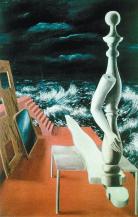 Rene Magritte: Birth of the Idol, 1926 (Published with Searle's review in The New York Review of Books) In this piece, John Searle critiques the notions of machine consciousness presented by Nick Bostrom and Alan Turing by questioning their assumptions about what it means for a computer to “know” something. He presents a distinction between observer-independent reality (which exists regardless of what we think) and observer-relative reality and claims that while human consciousness is observer-independent, machine consciousness is not. An example he uses to illustrate this point inolves a machine performing a simple computation. Though a computer can add 2 and 2 together and output 4, Searle argues that this output is completely insignificant without human interpretation. Thus, a computer can't really compute anything alone. Amidst the growing number of works that focus on the seemingly inevitable rise of super-human machine intelligence, this piece provides a literal “reality-check” regarding the multiple layers of abstraction that exist between a computer’s interface (i.e., how it might response to your inputs) and its physical computing hardware. While Turing equated machine intelligence with it’s observable behavior, Searle reminds us that intelligence and cognitive processes are closely, perhaps inextricably, linked. Moreover, he pushes readers to acknowledge the role human biology plays in the creation of human-level intelligence. -- Megan Woodruff Image and Article: http://www.nybooks.com/articles/2014/10/09/what-your-computer-cant-know/... |
Megan Woodruff | ||
| 16 Dec 2014 |
White Christmas (Black Mirror TV Series)The finale of season two, "White Christmas" describes a future in which individuals can effectively upload their brains into a small device known as a cookie. These cookies become electronic clones and are then used for a myriad of reasons ranging from criminal investigation to personal convenience. Directed by Carl Tibbetts and written by Charlie Brooker, this addition to the thrilling Black Mirror series continues to push the limits on how technology will shape human interaction and emotion. In the episode, John Hamm plays Matt Trent, a suave and attractive consultant who excels at human manipulation. Using several moments flashback, the narrative follows Matt's conversation with Joe Potter, played by Rafe Spall. Over time, the audience discovers the depth of their transgressions. The episode also implements a technology in which individuals can "block" one another through devices implanted in their eyes. This "blocking" blurs the image of the "blocked" person and mutes all communication between parties. In this dystopian world, this technology is often applied as a punishment. This episode brings to light several questions about the ramifications of cloning and access to limitless data. "White Christmas" to ask whether or not downloaded brains should be considered human and given human rights. Like all of Black Mirror, this season finale paints a shocking image of how technology will change society. |
Brad Callander | ||
| 2015 |
Alex Garland, Dir., Ex Machina (2015)Ex Machina (2015), Alex Garland, Dir.
Background: “Ex Machina,” debuting in 2015, was written and directed by Alex Garland, and starred Alicia Vikander, Domhnall Gleeson, Oscar Isaac, and Sonoya Mizuno. The film follows a programmer named Caleb who wins a prize to visit the CEO of his company, later discovering that the real purpose is to administer the Turing Test to Ava, a humanoid robot with AI. Plot Summary: Caleb Smith works for a software company and wins a free trip to the home of Nathan Bateman, CEO of the company. Caleb soon comes to realize that Nathan has built a humanoid robot with AI. Ava, the robot, has passed the Turing test and Nathan wants Caleb to determine whether she is capable of true thought and consciousness. Ava and Caleb begin their conversations while Ava is confined to a small apartment in the building. Caleb soon discovers that Ava can cause power shortages so that they might speak without the surveillance of Nathan. During a power outage, Ava tells Caleb that Nathan cannot be trusted. When Caleb discovers that Nathan intends to upgrade Ava, he persuades Nathan to drink until he passes out. Caleb then breaks into Nathan’s room and watches surveillance of Nathan interacting with Ava, Kyoko, and what look to be earlier models. Thinking that he might be an android, Caleb cuts his own arm. Caleb tells Ava his plan during the next power outage to get Nathan drunk, reprogram the security locks to open during a power outage, allowing them to escape together. Nathan reveals that he has been watching them all along on a battery-powered camera and that Ava has only been pretending to like him to escape, thus proving her intelligence. Ava cuts the power, Caleb reveals that he modified the security system the previous day, Nathan watches Ava leave her apartment and hits Caleb on the head, rushing to stop Ava. Ava and Kyoko kill Nathan, and in the process Kyoko is destroyed. Ava repairs herself, resembling a human woman, and leaves Caleb trapped inside the facility. She escapes to the real world in a helicopter. Themes and Analyses: Gendering Alex Garland specifically toys with gender in “Ex Machina.” By making Ava female and using feminine pronouns, Garland comments on not only gendering but the sexualization of young women. Garland demonstrates social hierarchies of gender by questioning what it means to be a creator and how the gender of this creator affects the gender and sexualization of the machine. For example, at one point Nathan says “im like her dad.” In this way the power structure between omnipotent creator and creation becomes not only a sexual relationship but also a fatherly one. As Ava dresses she demonstrates a childish wonder and while she undresses, the object of sexual attraction. In this way, Garland explores the relationship between a powerful being, in this case male, and an initially vulnerable being, in this case female.
Sexualization Garland also explores sexualization of young women. In an interview, he states, “when it comes to sexuality, there's a different thing going on. Essentially, what it's about is, the fetishization of girls in their early 20s. Now, that's not really about gender — it's a completely separate issue.” (Alex Garland) One sees this explored in the film when Nathan says about Kyoko“gets ya right up in the morning.” This is also explored when Ava asks Caleb “are you attracted to me” and manipulates him by using bother her gender and sex appeal into thinking they’re in a strange loving relationship.
Gaze Theory As Wikipedia defines it, “The male gaze is the way in which the visual arts and literature depict the world and women from a masculine point of view, presenting women as objects of male pleasure. The phrase male gaze was coined by feminist film critic Laura Mulvey in 1975.” The male gaze in cinema allows one to see a furthering of Garland’s exploration of gender. Both Caleb and Nathan are constantly watching Ava. Caleb thinks himself superior to Nathan, however, he too gazes at Ava and finds her sexually appealing. Scopophilia is when looking itself is a source of pleasure and in reverse there is pleasure in being looked at as well. Caleb enjoys watching Ava, Nathan watches Caleb, and Ava knows that she is being watched and manipulates Caleb through his gaze.
Work Cited "Ex Machina (film)." Wikipedia. Wikimedia Foundation, 25 Mar. 2017. Web. 26 Mar. 2017. "Male Gaze." Wikipedia. Wikimedia Foundation, 23 Mar. 2017. Web. 26 Mar. 2017. "Ex Machina: A Feminist Sci-Fi Thriller." Geek and Sundry. N.p., 22 May 2015. Image. Web. 26 Mar. 2017. -Ali Maas |
Ali Maas | ||
| 2 Oct 2016 to 4 Dec 2016 |
Westworld (TV series)The HBO show created by Jonathan Nolan and Lisa Joy, Westworld, is a sci-fi thriller set in the American West, or at least a facsimile of it. The name refers to an expensive amusement park where human guests can interact with androids (i.e. robots designed to seem human). The guests can do whatever they like, enticed by androids who work as prostitutes and gun-slinging cowboys. The show weaves together storylines of a few devoted guests, Westworld creators and employees, and the andorids, as all three seek to achieve their respective goals. Westworld fans are now looking forward to the second season, which will premiere in 2018. The Maze Is Not For You (SPOILER ALERT)In Westworld, the androids approach consciousness, as represented by a maze. The first maze we see is inked onto the underside of an android's skull. This maze, which features the design of a person at the center, is later seen carved into a dusty field. The second maze we see is slightly different, since it can be viewed simultaneously as representing a person and an eye. As a represention of consciousness, this design reminds me of the concept of the mind's eye, "the third eye," or the pineal gland. The Western philosopher René Descartes believed the pineal gland was the "principal seat of the soul." Descartes is most well-known for his extensive writings about the separation between the mind and the body (i.e., Cartesian dualism) and the nature of consciousness. In Westworld, it's unclear whether the androids achieve true consciousness. If they do, does this disprove Descartes? Science is inclined to tell us that the human mind emerges from the physical properties of the human body. But what does it mean if the non-organic android is programmed to 'think' for itself? The show teases viewers with this fundamental question, while the hosts/guests themselves are tortured by it. The maze in the design of a person at the center:
The maze in the design of an eye at the center:
By Alisha Newton |
Alisha Newton |



